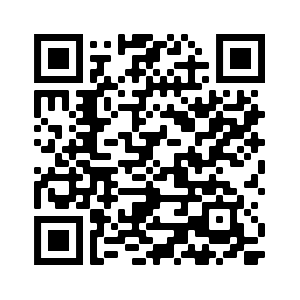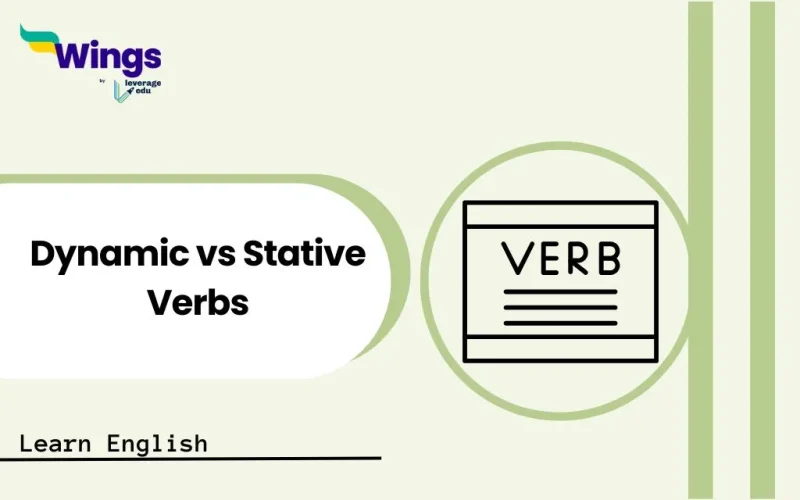Have you ever stopped to think about the different ways we use verbs? Some describe actions we can see happening, like running or jumping, while others describe states of being, like knowing or liking. This difference is key to understanding English grammar and using verbs correctly. We’re diving into the world of dynamic vs. stative verbs, and by the end of this post, you’ll have a clear understanding of what they are, how they work, and why they matter. Get ready to unlock a new level of English fluency!
This Blog Includes:
Read more on Verbs here!
What are Dynamic Verbs?
Dynamic verbs, also known as action verbs, describe actions that have a clear beginning and end. They show a change or process happening. Think of activities you can physically see someone doing.
Here’s a breakdown of dynamic verbs:
- They describe actions: These verbs show something happening, whether it’s a physical action or a mental process.
- They have a clear beginning and end: The action described by a dynamic verb has a distinct start and finish.
- They can be used in continuous tenses: Because they show actions in progress, dynamic verbs can be used in tenses like the present continuous (e.g., “She is running”) or past continuous (e.g., “They were playing”).
How to identify dynamic verbs:
- Ask yourself: “Can I see someone doing this?” If the answer is usually yes, it’s likely a dynamic verb.
- Consider the meaning: Does the verb describe an action that unfolds over time, or does it describe a state of being?
Why are dynamic verbs important?
Having a basic understanding of dynamic verbs is important for the following reasons:
- Using correct verb tenses: Dynamic verbs can be used in continuous tenses, which are essential for expressing actions in progress.
- Clear communication: Choosing the right dynamic verb helps you accurately describe actions and events.
- Grammatical accuracy: Using dynamic verbs correctly ensures your sentences are grammatically sound.
Also Read: Action Verb Worksheets
What are Stative Verbs?
Stative verbs, also known as non-action verbs, describe states of being, conditions, feelings, thoughts, opinions, or possessions. They don’t typically show a physical action happening; instead, they describe a situation that exists. They represent something static, rather than dynamic.
Key Characteristics of Stative Verbs:
- Describe states, not actions: Stative verbs express a condition, feeling, or state of mind rather than a physical or observable action.
- Generally not used in continuous tenses: Because they describe states, using them in continuous tenses (like the present continuous) usually sounds unnatural. You wouldn’t typically say “I am knowing the answer,” but rather “I know the answer.”
- Often related to internal experiences: Many stative verbs describe things happening inside our minds, like thoughts, feelings, and beliefs.
Why are Stative Verbs Important?
Understanding stative verbs is crucial for:
- Correct grammar: Using the correct verb tense, particularly avoiding continuous tenses with stative verbs, is essential for grammatical accuracy.
- Clear communication: Using stative verbs appropriately ensures your meaning is clear and easily understood. It helps avoid awkward or incorrect phrasing.
- Nuance: Recognizing the difference between stative and dynamic verbs allows you to express subtle differences in meaning.
Read What are Stative Verbs from Here!
What is the Difference Between Dynamic vs Stative Verbs?
Let’s try to make this distinction between dynamic and stative verbs clearer and more engaging!
Imagine verbs as characters in a play. Some are energetic actors, always on the move, while others are more like stage props, setting the scene and defining the atmosphere.
Dynamic verbs are the actors: They’re the ones performing actions, making things happen. They can run, jump, sing, dance – they’re all about movement and change. Think of them as the “doers” in a sentence.
Stative verbs are the stage props: They’re the ones that define the state of things. They might represent feelings, thoughts, possessions, or senses. They’re not actively doing anything, but they’re essential for setting the stage and telling us about the situation. Think of them as the “describers” in a sentence.
Here’s a fun way to remember the difference:
- Dynamic: If you can film it happening, it’s probably dynamic! (e.g., running, eating, writing)
- Stative: If it’s more about what’s going on inside someone or something, it’s probably stative! (e.g., feeling, thinking, owning)
Take a look at the following table for a better understanding along with examples:
| Feature | Dynamic Verbs | Stative Verbs |
| What they do | Show actions and changes | Describe states and conditions |
| Continuous Tenses | Usually okay (e.g., is running) | Usually not okay (e.g., NOT is knowing |
| Examples | run, jump, eat, write, think (consider) | know, love, own, believe, seem, want, need, think (believe) |
Must Read: Types of Verbs
20+ Dynamic vs Stative Verbs Examples
Here’s a table with over 20 examples of dynamic and stative verbs, along with example sentences to illustrate their usage:
| Dynamic Verbs | Sentence Example | Stative Verbs | Sentence Example |
| Run | The athlete is running a marathon. | Know | I know the answer. |
| Jump | The children were jumping on the trampoline. | Understand | She understands the instructions. |
| Eat | He is eating his lunch. | Believe | I believe in you. |
| Write | She is writing a novel. | Think | I think it’s a good idea. |
| Read | They were reading quietly. | Remember | I remember my childhood fondly. |
| Speak | He is speaking at the conference. | Forget | I often forget my keys. |
| Listen | She is listening to music. | Like | He likes to play guitar. |
| Learn | They are learning Spanish. | Love | She loves her family. |
| Study | He is studying for the exam. | Hate | I hate being late. |
| Plan | We are planning a vacation. | Want | I want a new car. |
| Create | The artist is creating a sculpture. | Need | I need a cup of coffee. |
| Build | They are building a house. | Prefer | I prefer tea over coffee. |
| Sing | She is singing in the choir. | Fear | He fears heights. |
| Dance | They were dancing at the party. | Possess | They possess a great deal of knowledge. |
| Throw | He is throwing the ball. | Have | I have a pet cat. |
| Catch | She is catching the frisbee. | Seem | It seems like a good plan. |
| Think (Consider) | I am thinking about the problem. | Appear | He appears to be tired. |
| Feel (Touch/Manipulate) | I am feeling the soft fabric. | Be | She is a doctor. |
| Drive | He is driving to work. | Belong | The book belongs to me. |
| Work | She is working on a project. | Smell | The roses smell wonderful. |
Also Read: Stative Verb Exercises for English Grammar
Dynamic vs Stative Verbs Exercises
Once you have understood the difference between dynamic vs stative verbs, it is now time to go through the following exercises for a better understanding. Below are exercises on the same along with the answers to check your performance in the end.
Exercise 1: Identify the verbs as Dynamic or Stative
- She owns a beautiful house.
- He is playing the guitar.
- I believe in you.
- They are eating dinner.
- She knows the answer.
- He is thinking about the problem.
- I love chocolate.
- They are building a new school.
- She seems tired.
- He is running a marathon.
Answers:
- Stative
- Dynamic
- Stative
- Dynamic
- Stative
- Dynamic
- Stative
- Dynamic
- Stative
- Dynamic
Exercise 2: Choose the correct verb form (continuous or simple present)
- I (know/am knowing) the answer.
- She (plays/is playing) the piano beautifully.
- He (likes/is liking) ice cream.
- They (build/are building) a new house.
- We (see/are seeing) a movie tonight. (Note: “See” can be dynamic when it means “to go to see” or “to meet”)
- I (think/am thinking) about what you said.
- She (has/is having) a headache.
- He (owns/is owning) a computer.
- They (are/are being) very kind.
- I (feel/am feeling) unwell. (Note: “Feel” can be dynamic when it means “to touch” or “to explore by touch”)
Check Answers:
- know
- is playing
- likes
- are building
- are seeing
- am thinking
- has
- owns
- are
- feel
Exercise 3: Fill in the blanks with the correct form of the verb (stative or dynamic)
- I ______ (believe) you are right.
- She ______ (study) for her exams.
- He ______ (own) a motorcycle.
- They ______ (watch) television.
- We ______ (need) more information.
- I ______ (think) this is a good idea. (Opinion)
- I ______ (think) about the future. (Considering)
- She ______ (love) to read.
- He ______ (run) every morning.
- The flowers ______ (smell) sweet.
Answers:
- believe
- is studying/studies
- owns
- are watching/watch
- need
- think
- am thinking
- loves
- runs/is running
- smell
Explore more blogs on Learn English Here!
FAQs
Dynamic verbs show actions (e.g., run, jump), while stative verbs show states of being, feelings, or thoughts (e.g., know, love, believe). This difference affects how we use them with continuous tenses.
Love is a stative verb. It describes a state of being or feeling, not an action. 1 You wouldn’t say “I am loving you” (unless you’re using it in a very specific, unusual, and probably incorrect way). You would simply say “I love you.”
“Smell” can be both stative and dynamic, depending on how it’s used:
Stative: When “smell” describes the general odour of something, it’s stative. For example, “The flowers smell nice.” This describes the inherent scent of the flowers.
Dynamic: When “smell” describes the action of actively sniffing or inhaling something, it’s dynamic. For example, “I am smelling the coffee.” This describes the act of actively trying to perceive the coffee’s scent.
“Lie” can be both stative and dynamic, but it’s important to distinguish between the two different meanings of “lie”:
Lie (to recline): This meaning is stative. It describes a state of being in a horizontal position. For example, “He lies on the bed.” You wouldn’t say “He is lying on the bed” in the same way you would say “He is running” because lying in this context is a state, not a continuous action. Although, “He is lying on the bed” is grammatically correct and commonly used, it describes the current situation of him being in that position.
Lie (to tell an untruth): This meaning is dynamic. It describes the action of telling a falsehood. For example, “He lied to me.” You can also say “He is lying to me” because the act of lying can be ongoing.
“Sleep” can be both stative and dynamic, depending on the context:
Stative: When you talk about sleep as a general state or condition, it’s stative. For example, “I need eight hours of sleep.” Here, “sleep” is a state of being. You wouldn’t usually say “I am needing eight hours of sleep.”
Dynamic: When you talk about the act of sleeping, it’s dynamic. 1 For example, “The baby is sleeping.” Here, “sleeping” describes the action in progress. You can also say “I slept well last night.” Here, “slept” describes a completed action.
So, while the state of sleep is stative, the act of sleeping is dynamic.
We hope this blog on the “Dynamic vs Stative Verbs ” was informative and helped you improve your English skills. You can also follow the Learn English page of Leverage Edu for more exciting and informative blogs related to English grammar and the English language.
 One app for all your study abroad needs
One app for all your study abroad needs















 60,000+ students trusted us with their dreams. Take the first step today!
60,000+ students trusted us with their dreams. Take the first step today!

